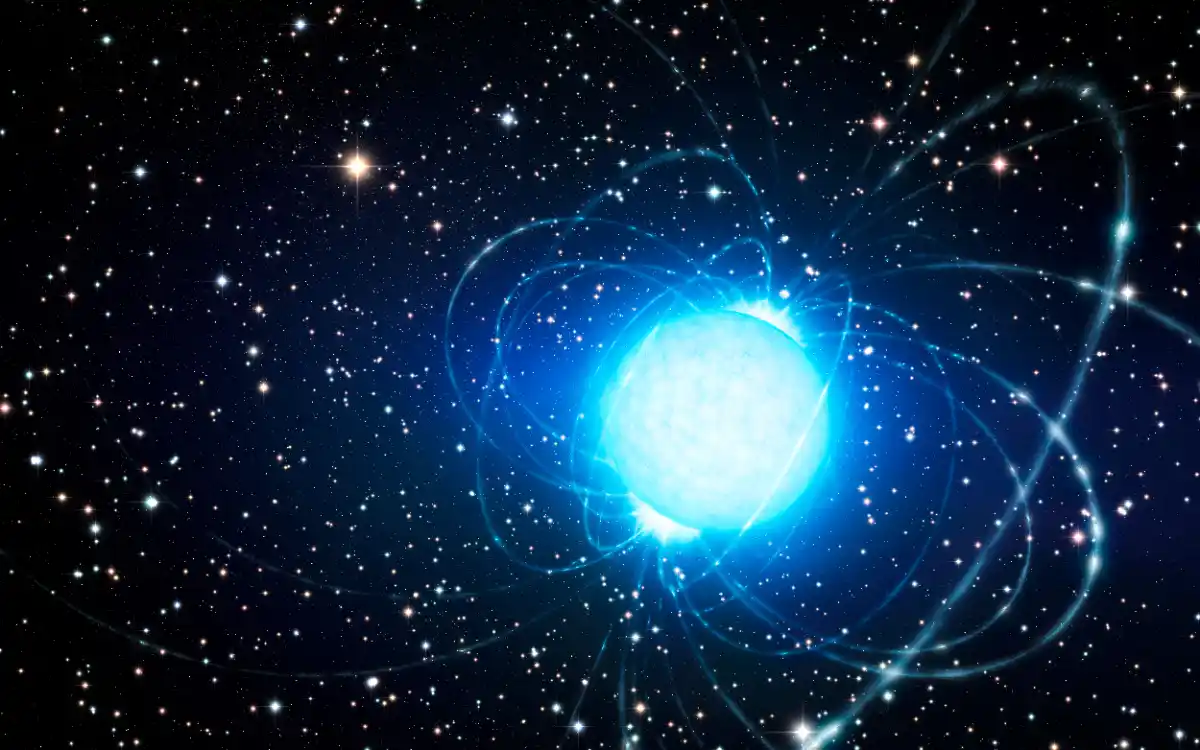| Summary |
|
In a major astrophysical breakthrough, an international team from the University of Hong Kong, Nanjing University, and the Chinese Academy of Sciences has detected the first-ever “heartbeat” of a newborn magnetar, a highly magnetized neutron star, inside a powerful gamma-ray burst known as GRB 230307A.
The signal, identified as a rapid 909-hertz pulsation lasting just 160 milliseconds, reveals a magnetar spinning over 900 times per second and marks the first direct evidence that such objects can power some of the universe’s most extreme explosions. The findings were published in Nature Astronomy in September 2025.
GRB 230307A was first detected on March 7, 2023, when China’s GECAM satellites and NASA’s Fermi Gamma-ray Burst Monitor recorded one of the brightest bursts ever seen. It lasted nearly a full minute, far longer than typical short gamma-ray bursts linked to neutron star collisions.
Optical telescopes later confirmed that the source lay about 1.9 billion light-years away. The burst’s brightness and duration suggested an unusually energetic central engine, leading researchers to suspect the formation of a fast-spinning magnetar rather than an immediate black hole collapse.
Researchers analyzed more than 600,000 data points from GECAM’s detectors using advanced statistical tools to search for hidden periodic signals. In the burst’s early emission phase, they found a clear 909-hertz quasi-periodic oscillation, a repeating pulse equivalent to a spin period of roughly 1.1 milliseconds.
The team verified the signal across multiple instruments with independent Monte Carlo tests, establishing it at a 5-sigma confidence level, the gold standard for discovery in physics. The pulsation was strongest between 100 and 200 kilo-electron volts, suggesting it originated from the magnetar’s magnetic wind imprinting its rotation onto the gamma-ray jet.
“This is the first time scientists have directly observed a periodic signal from a newly born magnetar inside a gamma-ray burst,” said Run-Chao Chen, lead author and doctoral researcher at Nanjing University.
Professor Bing Zhang of the University of Hong Kong, co-author of the study, described it as “a long-sought confirmation that magnetars can survive neutron star mergers and act as central engines driving cosmic explosions.” Zhang first predicted this magnetar-powered model more than a decade ago, and the new detection provides the strongest evidence yet for it.
Unlike short, two-second bursts created when merging neutron stars form an instant black hole, the longer emission of GRB 230307A implies a neutron star survived temporarily. Data show that its extreme rotation and trillion-gauss magnetic fields funneled energy into two collimated, magnetized jets.
For about 160 milliseconds, slight asymmetries in one jet made the spin visible as a gamma-ray pulse before the emission smoothed out as the burst evolved. Spectral modeling indicates the jet’s power source was an electromagnetic outflow, known as a Poynting-flux jet, rather than a matter-dominated one.
The discovery reshapes how astronomers understand gamma-ray bursts. It confirms that magnetars can form and shine briefly after mergers, bridging observational gaps between gamma-ray emissions, gravitational waves, and the physics of dense nuclear matter.
It also provides new ways to probe the structure of neutron stars. Further analysis may help test whether magnetar interiors hold exotic quark matter, an idea long debated in nuclear physics. Future missions like Insight-HXMT and Einstein Probe are expected to capture more such gamma-ray pulses, improving chances of catching the magnetic spin signatures of newborn neutron stars.
Researchers suggest that combining gamma-ray and gravitational-wave data could eventually confirm magnetar births in real time, linking light and gravity across the cosmos. For now, the 909-hertz pulse from GRB 230307A stands as the first recorded rhythm of a star being born in fire and magnetism, echoing from nearly two billion light-years away.
Source: Evidence for a brief appearance of gamma-ray periodicity after a compact star merger

